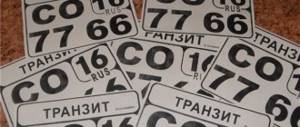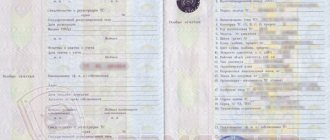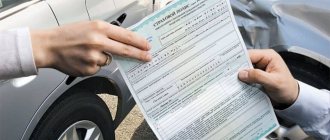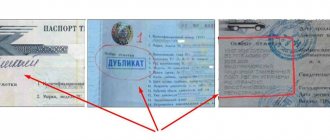Car exchange options
If we talk about exchanging a car for a car, there are several most common schemes:
- According to the exchange agreement.
- "Key to key."
- According to the trade in program.
In addition, no less common are the options of exchanging a car for real estate with an additional payment, or exchanging one type of vehicle for another (for example, a car for a motorcycle under an exchange agreement with an additional payment).
Please note that the exchange agreement itself will differ somewhat: between individuals, between an individual and a legal entity, of a mixed type, with and without additional payment.
Options for exchanging used cars
The exchange of an old car for a new or used one can be done using the state recycling program or the Trade-in service. It is profitable, convenient and safe. In this case, you usually have to add a certain amount of money, which is not always suitable.
In general, there are several options to exchange your car for a used one. There are more risks; a thorough check of the car and documents is required. However, the financial interest of the owners is always taken into account. So, the exchange is carried out:
- With an additional payment, when one of the participants in the transaction receives the difference between the declared prices.
- No extra charge, or key to key.
Exchange key to key
A key-to-key exchange of used cars is applicable when the conversation is about cars of equal value. The owners agree on a meeting place and time, inspect each other’s cars, study documents, technical condition and conduct a test drive. If the exchange takes place at a car dealership, then this procedure is practically unified.
If everything is satisfactory, the parties agree that the cost of the car is the same, and then they simply exchange them. No extra charges. The participants in a future transaction decide how it will be executed. Then they prepare the documents, check their legality, and then exchange machines.
Exchange with surcharge
Exchange of used cars for used ones with an additional payment is much more common. In principle, it is almost no different from the first option. The monetary issue is also resolved by agreement. Let us remind you that you can bargain in salons. The transaction mechanism is similar.
The only nuance in the procedure is the transfer of the difference in cost. At dealerships this is solved easier and safer. At the “bazaar” you can encounter scammers. In addition, the tax office may have questions for you.
Advantages of exchanging an old car for a new one
In this case, everything is relative: the exchange agreement is beneficial to someone who does not want or cannot sell the vehicle:
- From a financial point of view, it is more profitable to exchange vehicles than to sell one and buy another.
- There is less paperwork, especially since according to the new legislation there is no need to first deregister the vehicle.
- Convenient - because you don’t have to wait until one car is sold and the second is registered and ready for its intended use.
Regardless of which car exchange option you choose, you need to be especially careful about the legal side of the issue. It is much better if the contract is drawn up by a lawyer.
Exchange via Trade-in
This option allows you to exchange cars with legal entities. The transaction mechanism is similar to that described, only a little simpler. Car diagnostics and maintenance are carried out in car showrooms. A car will be driven through the database and considered as a worthy option if it:
- belongs to one owner;
- not pawned, not arrested or hijacked;
- technically sound.
You will need the same documents (read above). The legal purity of the transaction and the safety of the client in this case are guaranteed.
Preparing for the deal
Before signing an exchange agreement, you need to carefully check the vehicle for the following factors:
- Was the car stolen and is it currently on the wanted list?
- Insurance history of the vehicle.
- Presence of unpaid fines.
In addition, when signing an agreement, you need to carefully check the title documents for the vehicle, including the power of attorney if the car is being sold through a third party.
Required documents
What documents are needed when exchanging cars? The basic package of documents includes the following:
- Vehicle registration certificate.
- Vehicle passport.
- Title documents for cars.
- Personal passports of the parties.
- Barter agreement.
Immediately after signing the documents, in addition to the exchange agreement, the following is attached:
- The act of acceptance and transfer.
- Certificate of technical condition of the vehicle.
As a rule, other documents are not required when exchanging cars.
Agreement of exchange between individuals
The actions of the parties in this case are regulated by Chapter 567 of the Civil Code of the Russian Federation. An exchange agreement is drawn up in free form, but the following content must be observed:
- Introductory part - it indicates the addresses and passport details of the parties.
- Description of cars - make, model, body color, license plates, engine and body number.
- Mark of ownership, with reference to data from the title and vehicle registration certificate.
- Agreed value of vehicles.
- Amount of additional payment (if necessary) and payment terms.
- Procedure and terms of transfer of the vehicle.
- Written confirmation that the cars are not in pledge, under arrest, wanted or stolen.
- Responsibilities and rights of the parties.
- Conditions for termination of the contract.
- Addresses and signatures of the parties, date of conclusion.
It goes without saying that the best option would be to have such a document certified by a notary.
Exchange agreement with additional payment
How to exchange a car for another if they have a significant difference in price? In this case, the best option would be to draw up an exchange agreement with an additional payment. It is concluded in the same way, but due to the difference in price, there will be the following additions:
- The amount of the surcharge must be indicated.
- The contract must indicate the actual cost of each vehicle.
- Mandatory condition: the owner of the cheaper car must pay income tax on the monetary difference.
Notarization is also highly recommended. We previously wrote in more detail about the exchange agreement with additional payment here.
Collect as many reviews as possible and conduct test drives
To make a smart choice, you will have to work hard. First, study what professionals and amateurs, but, first of all, the owners, wrote and filmed about the cars they liked. With such theoretical preparation, you can go on test drives.
It is advisable to test a car in several versions: cars in entry-level and top-end trim levels both drive and feel very differently. Sometimes it’s almost diametrically opposed.
During the test drive, try to listen to yourself, and not to the manager accompanying you.
Expert opinion
Sergey Tselikov, director of the analytical agency Autostat:
—
Changing a car is a fairly complex undertaking for most people and requires extensive preparation to minimize risks and maximize benefits.
First, you need to study the market so that you have a clear idea of what you are selling and going to buy.
Secondly, if you do not have enough experience to sell a car yourself, it is better to turn to professionals - to a dealership to trade-in the car. It may be valued slightly below the market price, but you will be given a discount on a new car that will compensate for the loss.
Thirdly, you need to have several backup options: discuss the sale and purchase of cars with managers of several dealership centers in order to choose the most favorable conditions.
Exchange under the trade in program
This option is perfect for those who want to exchange an old car for a new one, straight from the showroom. The main advantage of exchanging an old vehicle for a new one with such a program is that the procedure is carried out not with someone unfamiliar, but with a company, that is, a legal entity, so there will be no “pitfalls” or and other negative factors.
You can find out more about how to properly arrange a car exchange under the trade-in program here.
Exchange of an old car under the car recycling program
Initially, according to the plan, owners of old vehicles received a certificate in the amount of 50,000 rubles and could spend this amount on purchasing a new car under the recycling program of the Ministry of Industry and Trade.
At the start of the program, it was planned that it would function for one year, but based on the results of the first year of work, as well as under the influence of the economic situation in the Russian automobile market, the program was resumed in September 2014 and is still in effect.
It is expected that the list of vehicles participating in the recycling program will be expanded (including heavy special equipment and trucks), and only vehicles produced in Russia will be sold.
In mid-November 2021, the Russian President told reporters that government support for the Russian automotive industry will continue in 2021:
“There will be support. Now I’m just afraid to get ahead of myself, to name specific numbers and methods, but it will be... In 2021, the total amount of support for the automotive industry amounted to 65 billion rubles. If this support did not exist, we would have had a market reduction of 30-40%. We managed not only to maintain the segment in the production of passenger cars, but sales of trucks and buses increased slightly.”
So the Ministry of Industry and Trade will continue the program for recycling old domestic cars in 2021, especially with the support of the Kremlin.
Please note that in addition to the recycling program, you can exchange your old car for a new car under the trade-in scheme.
Key-to-key exchange
Already from the name you can understand that the exchange is carried out without additional payment, that is, it is equivalent - the owners simply exchange keys and documents for their vehicles, and, of course, there is no question of additional payment.
The contract must indicate the same value of the vehicles, otherwise the tax inspectorate may have unnecessary questions. The exchange agreement itself is drawn up according to the standard principle described above.
Please note that in all cases of exchanging a vehicle, the procedure can be carried out through a third party - subject to the presence of a power of attorney for such procedures.
Exchange under the trade-in program
Selling a vehicle or exchanging it for money is a beneficial option for the owner, but not in all situations. A rare model, unclaimed, out of season - there are many reasons for an unsuccessful sale. Here, the best option is an exchange or trade-in system, which makes it easy to purchase a new car.
The program has the following advantages:
- instant sale of used vehicles;
- there is no need to search for buyers, meetings, telephone conversations;
- risk excluded;
- to complete the transaction, it is enough to agree on the price of the old car;
- Specialists are involved in processing the required documents;
- The new car is available to the owner within a few hours.
The mechanism of the system allows you to understand how to exchange a car using trade in.
Main stages:
- The owner arrives at the car dealership by car.
- Presentation of documents, diagnostics.
- History check, assessment of transport, determined by its condition.
- Choosing a new attractive model, purchasing it with an additional payment of the difference.
- Preparation of documents.
The vehicle is assessed taking into account certain factors.
The meaning is:
- year of issue;
- manufacturer, model;
- appearance;
- equipment.
The total amount offered to the owner is 15% lower than the cost of similar models on the market. But the system is effective due to the speed of the procedure, eliminating the need to independently deal with all stages and sales. Discounts on cars purchased at the showroom are also attractive, and they increase along with the price of the new car.










